You see these pathetic so-called "protestants," never protesting what was and is so very obvious! Oh! No! Instead they are found to be kissing the ring of the Pope and being "honored" by him as the worst of these did, Billy Graham! Ah! Should he ever make it to the Judgment Seat of Christ, which I sincerely doubt, he shall have to answer for a whole lot!
Instead, I have no doubt that he will meet with God's wrath at the Great White Throne Judgment of Christ!
.
Simon Peter Versus Simon Magus: Who Was The Real First Pope?
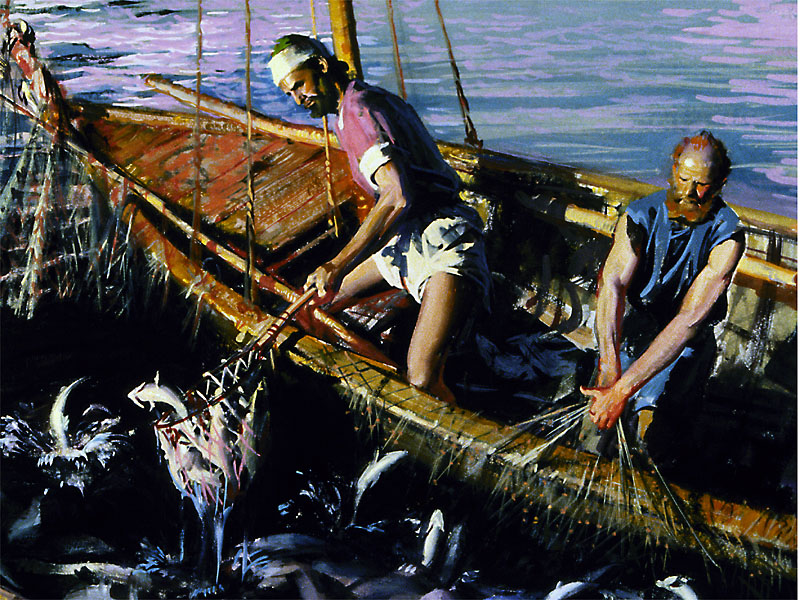

Let's read of what Christ said to Simon Peter in Matthew 16:18-19, "And I say also unto thee, That thou art Peter, and upon this rock I will build my church; and the gates of hell shall not prevail against it. And I will give unto thee the keys of the kingdom of heaven: and whatsoever thou shalt bind on earth shall be bound in heaven: and whatsoever thou shalt loose on earth shall be loosed in heaven." The Vatican declares Jesus placed Peter as "the greatest" in Matthew 16, yet much later on in Matthew 18 we find this is a lie because the Apostles, of which Peter is one, are asking who is the greatest. If Jesus really did install Peter as Pope that day as the Vatican claims, there should be no question as to "who is the greatest." By the way, the Lord Jesus Himself said...Matthew 20:25-26, "But Jesus called them unto him, and said, Ye know that the princes of the Gentiles exercise dominion over them, and they that are great exercise authority upon them. But it shall not be so among you: but whosoever will be great among you, let him be your minister". So this is some evidence to disprove of him being a Pope. Pope is short for "Pontifex Maximus", a Pagan title meaning the great bridger builder, and not used until atleast 5th century. The Apostle Paul distinctly informs us that Peter was not in Rome in 65 A.D. -- even though Catholics say he was. Paul said: "Only Luke is with me" (II Tim. 4:11). The truth becomes very plain. Paul wrote to Rome; he had been IN Rome; and at the end wrote at least six epistles from Rome; and not only does he never mention Peter, but at the last moment says: "Only Luke is with me." Peter, therefore, was never Bishop of Rome! Near 45 A.D., we find Peter being cast into prison at Jerusalem (Acts 12:3, 4). In 49 A.D., he was still in Jerusalem, this time attending the Jerusalem Council. About 51 A.D., he was in Antioch of Syria where he got into differences with Paul because he wouldn’t sit or eat with Gentiles. Strange that the "Roman bishop" would have nothing to do with Gentiles in 51 A.D.! Later in about 66 A.D., we find him in the city of Babylon among the Jews (I Pet. 5:13). Remember that Peter was the Apostle to the circumcised. Why was he in Babylon? Because history shows that there were as many Jews in the Mesopotamian areas in Christ’s time as there were in Palestine. It is no wonder we find him in the East. Perhaps this is the reason why scholars say Peter’s writings are strongly Aramaic in flavor, the type of Aramaic spoken in Babylon. Why of course! Peter was used to their eastern dialect. At the times the Catholics believe Peter was in Rome, The Bible clearly shows he was elsewhere. As previously mentioned there are many supposed historical accounts of Peter in Rome but none of them are first hand accounts and should not be put above the many accounts of The Bible. So now what about Simon Magus? History shows he went to Rome. Let's read of him in Acts8:9-24. But there was a certain man, called Simon, which beforetime in the same city used sorcery, and bewitched the people of Samaria, giving out that himself was some great one: To whom they all gave heed, from the least to the greatest, saying, This man is the great power of God. And to him they had regard, because that of long time he had bewitched them with sorceries. But when they believed Philip preaching the things concerning the kingdom of God, and the name of Jesus Christ, they were baptized, both men and women. Then Simon himself believed also: and when he was baptized, he continued with Philip, and wondered, beholding the miracles and signs which were done. Now when the apostles which were at Jerusalem heard that Samaria had received the word of God, they sent unto them Peter and John: Who, when they were come down, prayed for them, that they might receive the Holy Ghost:(For as yet he was fallen upon none of them: only they were baptized in the name of the Lord Jesus.) Note: There is a Gift of the Holy Ghost; an extra spirit portion, with evidence of it through other, or unknown tongues. Because they all had the Holy Ghost in them after baptism as Per Jesus' example in Matt3:12-17 and Paul's writings of Col2:10-12,Gal3:27, and Rom6:1-6. Then laid they their hands on them, and they received the Holy Ghost. And when Simon saw that through laying on of the apostles' hands the Holy Ghost was given, he offered them money, Saying, Give me also this power, that on whomsoever I lay hands, he may receive the Holy Ghost.But Peter said unto him, Thy money perish with thee, because thou hast thought that the gift of God may be purchased with money. Thou hast neither part nor lot in this matter: for thy heart is not right in the sight of God. Repent therefore of this thy wickedness, and pray God, if perhaps the thought of thine heart may be forgiven thee. For I perceive that thou art in the gall of bitterness, and in the bond of iniquity. The incident that took place between Simon Magus and the apostles sets the stage of many of the epistles of the New Testament and the early entrance of apostasy into the early church. The person that is mentioned and that we need to concentrate on is Simon Magus and how he transformed himself into the first leader of the false world wide religious system, the Catholic Church. The Book of Acts, however, performs its purpose in exposing who started the whole apostasy. God leaves it to the epistles. Revelations and the Gospel of John describe the heresy and even the Old Testament prophesied of the church falling away from the truth. We are certainly NOT left in doubt concerning its abominable teachings. There is hardly an epistle that does not mention the religious teaching of Simon Magus. Even the scholars who have studied Church History have seen that almost ALL of the references in the New Testament expose the errors in the first age of the Church and are directed exclusively to Simon Magus, or his immediate followers. A few of these examples will be given later and will show that the existence of a shadow church was already gaining strength and disrupting the true teachings of Christ.
Did Simon go his way after his strong rebuke for Peter? No, he did not. In fact, he considered himself to be a Christian. Several historians note this. With this evidence of Simon’s activities after his rejection by Peter, we will clearly be able to see why Luke thought it most important to tell the real condition of this man. He wanted to prove that he was in actuality NEVER an Apostle of Christ. In this regard, notice the comment of Hasting’s Dictionary of the Apostolic Church, Vol. 2, p. 496: "But it need NOT be supposed that when Simon broke with the Christians HE RENOUNCED ALL HE HAD LEARNED. It is more probable that he carried some of the Christian ideas with him, and that he wove these into a system of his own. This system is a mixture of pagan ideas wrapped with Christian names and identities. We further find in Schaff’s History of the Church a reference to this Simon Magus. He says: "The author, or first representative of this baptized Heathenism, according to the uniform testimony of Christian antiquity, is Simon Magus, who unquestionably adulterated Christianity with pagan ideas and practices, and gave himself out, in a pantheistic style for an emanation of God" (Apostolic Christianity), Vol. 2, p. 566). Harnack, a church historian, states that Simon Magus "proclaimed a doctrine in which the Jewish faith was strangely and grotesquely mixed with BABYLONIAN myths, together with some Greek additions. The mysterious worship . . . in consequence of the widened horizon and the deepening religious feeling, finally the wild SYNCRETISM [that is, blending together of religious beliefs], whose aim WAS A UNIVERSAL RELIGION, all contributed to gain adherents for Simon" (Vol. 1, p. 244). Eerdman's Handbook to the History of Christianity notes, "Early Christian writers regarded Simon as the fount of all heresies" (p. 100). The Encyclopaedia Britannica (11th ed.) in its article on Simon Magus identifies him as the "founder of a school of Gnostics and as a father of heresy." Noted historian Edward Gibbon says the Gnostics "blended with the faith of Christ many sublime but obscure tenets which they derived from oriental philosophy" (The Triumph of Christendom in the Roman Empire, p. 15). This is one of the identifying characteristics of the beast of Rev. 13 that is identified as the Roman Catholic Church. Revelation 13:2 “Now the beast which I saw was like a leopard, his feet were like the feet of a bear, and his mouth like the mouth of a lion.” The four beasts used to make up the beast are the same four beasts, Daniel saw in vision in Daniel 7. As a matter of fact, papal Rome inherited from each of these pagan empires some of their basic identifying traits that we still see practiced in this modern day false system of religion, the Roman Catholic Church. From Babylon, the lion the papacy inherited a pagan priesthood; from Medo-Persia, the bear sun worship; from Greece, the leopard human philosophies; and from the dragon, Pagan Rome, its power, seat and great authority. As stated in Rev. 13:2 the mixing of these pagan ideas of the Roman catholic church had its onset from the very beginning. From this Simon Magnus who was well versed in all of these abominable doctrines and false system of worship created the early Catholic Church. These abominably doctrines can be traced back to the very beginning throw Simon Magnus. History shows that Simon Magus did not stay in Jerusalem but moved to Rome. It is also well recognized that the religions of Asia, by Greek and Roman times, had also passed to the West. By the first century, the mystery religions of the Babylonians were centered primarily in Rome. At that time, Rome was the chief city of the world. With Rome as the center of the world it would only make sense that Simon Magus would move to Rome to spread his new religion a mixture of pagan beliefs and Christian doctrine. Simon Magus’ move to Rome is noted in several historical writings. His goal as stated by historical records was to create a universal church, “Religion”. A little side note that many are aware of is the meaning of the word catholic. The word catholic means universal. The word Catholic (katholikos from katholou -- throughout the whole, i.e., universal) occurs in the Greek classics. Yes, the correct meaning of the Catholic Church is the Universal Church. Simon can be classified among the major group of so-called Christians (and Simon called himself such), called by Harnack the: "decidedly anti-Jewish groups .. . . They advanced much further in the criticism of the Old Testament and perceived the impossibility of saving it [that is, the Old Testament] for the Christian UNIVERSAL RELIGION. They rather connected this [universal] religion with the cultus-wisdom of BABYLON and SYRIA" Harnack, a church historian (VoI. 1, p. 246).When Justin Martyr wrote [152 A.D.] his Apology, the sect of the Simonians appears to have been formidable, for he speaks four times of their founder, Simon; and we need not doubt that he identified him with the Simon of the Acts. He states that he was a Samaritan, adding that his birthplace was a village called Gitta; he describes him as a formidable magician, and tells that he came to ROME in the days of Claudius Caesar (45 A.D.), and made such an impression by his magical powers, THAT HE WAS HONORED AS A GOD, a statue being erected to him on the Tiber, between the two bridges, bearing the inscription ‘Simoni deo Sancto’ (i.e., the holy god Simon)" (Dictionary of Christian Biography, Vol. 4, p. 682). Hasting’s Dictionary of the Apostolic Church, Vol 2, p. 496, states that there is "very slight evidence on which to reject so precise a statement as Justin makes; a statement he would scarcely have hazarded in an apology addressed to Rome, where every person had the means of ascertaining its accuracy. If he made a mistake, it must have been at once exposed, and other writers would not have frequently repeated the story as they have done. We see this quote from Justin Martyr and from Hasting’s “Dictionary of the apostolic church” that Simon Magus was in Rome about the year 45A.D., this is further stated by his birthplace, a village called Gitta. It is also stated that Simon Magus was honored as a GOD, due to his magical “demonic powers that were witnessed”. From these historical accounts we see that indeed Simon Magnus was in Rome and was the head of his own church “Universal catholic”. In many of these accounts we also see that Simon Magnus was also consider by many to be God. Does that not fall in to place that the first pope aka Simon Magus was considered to be God. “The pope is not only the representative of Jesus Christ, but he is Jesus Christ himself, hidden under a veil of flesh.” The Catholic National, July 1895. There is no doubt that Simon Magus was called a god. Neither is there doubt that the papacy claims that the pope is God on Earth. In 1574 excavators found a fragment of marble on an island in the Tiber River with the inscription "Semoni Sanco Deu Fidio." Some interpret this as referring to a Sabine deity, Semo Sancus, but most likely it was part of the statue Justin Martyr described as having been dedicated to Simon Magus. There is little doubt in my mind that this is one of many similarities between the papacy and Simon Magus.
Here is the transition of Simon Magnus being considered God and the first pope and the big mistake that many confuse Simon Peter with Simon Magnus. The next step to change Simon Magus to Simon Peter was with the title of a God by some of his followers. What is another name or title is there for a pagan god? Surprising as it may sound, it is a well-known fact among students of ancient religion, that the chief pagan gods worshipped in the early civilizations were generally known by the name or title PETER. That would make Simon Magnus also be formally known as Simon Peter. The pagan priests of the mystery religions were called PATORS or PETERS. They had the power to interpret the heathen mysteries. This is further brought out by Bunson in his Hieroglyph, page 545, where he shows that the Egyptians -- as The Bible also indicates -- called their "interpreters" or priests: PETR, that is, PETER. The examples are too numerous to mention, but this should be enough to show that the name PETER, or its variants, figured very high in every phase of pagan worship. These PETER stones and temples were found all over the ancient world. "There is in the history of every oracular temple some legend about a stone; some reference to the word PETRA" (Bryant, p. 362). The world and history is littered with many example of the term PETER used as a title for a god. The title of Peter would be given to someone that claims to be and was seen to be a god. There are just too many instances that this title has been given and used in historical accounts. This change from Simon Magnus to Simon Peter is how the good apostle was mistaken to be the first pope of the Roman Catholic Church. If there is doubt that people would mistake a person as being a God, we must remember that the apostle Paul and Barnabas were also mistaken as gods. Acts 14:11-12“ And when the people saw what Paul had done, they lifted up their voices, saying in the speech of Lycaonia, The gods are come down to us in the likeness of men. And they called Barnabas, Jupiter; and Paul, Mercurius, because he was the chief speaker. What supposedly happened at the death of the apostle Peter in Rome was that Peter was crucified upside down at his own request. According to Catholic tradition, Peter asked that to be crucified upside down stating that he was not worthy to suffer the same kind of death as his master Jesus Christ. Then he was buried under the altar which now is the Basilica of Saint Peter. Here is a Catholic account of what happened to Peter’s body on the night of his death. In Keller’s comments below, he shows that he believes that Simon Peter was buried below the Vatican cemetery. He mistakes Simon Magnus for Simon Peter and tells what happened at the death of Simon in Rome during the first century. On the night of his death on the cross Peter’s followers BURIED his body. As in the case of Jesus on the hill of Calvary it was wrapped in linen and secretly taken to a PAGAN BURIAL GROUND on the Via Cornelia, behind the stone structure of the arena. This PAGAN CEMETERY lay on a knoll called VATICANUS: the Latin word ‘vatis’ means a ‘prophet’ or ‘SOOTHSAYER’. In days gone by there had been an Etruscan oracle on this spot" (Keller’s comment – the official comment of the Roman Catholic Church p. 368). Keller ought to have better logic to know that this Peter buried in this cemetery, of all places, could NOT be the Apostle Peter. In the first place, Peter was a Jew, and they had to be buried in their own cemeteries. This is quite a big step from not even being able to eat with gentiles, then to be buried in the special cemeteries reserved for the chief pagans and self proclaimed gods or Peters. And even if by a happen-chance a Jew could be buried in a Roman cemetery, it is most unlikely that a Jew -- especially one who attacked the Roman religion as the Apostle Peter did -- would ever have been allowed into the most holy of pagan cemeteries! This cemetery was reserved for prophets, soothsayers and the great ones of pagan Rome. I personally think that the apostle Peter wouldn’t be caught dead in a pagan cemetery. The records regarding Simon’s death vary widely. Many of the stories try to incorporate some fiction from the Greek and Egyptian myths to enhance the reader’s interest in this fascinating character. But the earliest records say that he was buried in Rome after a long period of great honors and deification. It is not clearly known where Simon Magus alias Simon Peter. At the judgment, I’m almost sure many will be quiet surprised to find out who in really under that altar in the Basilica in Rome, and it will not be the beloved Simon peters the apostil of Jesus Christ. The great faith that is placed on what appears to many to be the apostle Peter's bones, under the altar of the Basilica, is somewhat comical. Especially in light of the lack of biblical evidence that show that peter was never in Rome. Whose bones could be under that altar? I believe that they are the bones of Simon Magus Peter aka the first pope yet this most likely will not nor could be proven till the return of Christ himself. The certainty of this is the discovery of Peters tomb in Jerusalem. A well-hidden discovery of an archaeologist is the burial place of St. Peter Jerusalem. This is documented in a book called , "Gli Scavi del Dominus Flevit", printed in 1958 at the Tipografia del PP. Francescani, in Jerusalem. P. B. Bagatti and J. T. Milik, both Roman Catholic priests, wrote it. Here is a little bit of the proof that they used to document that the tomb of Saint Peter is in fact in Jerusalem. On the Franciscan monastery site called, "Dominus Flevit" (where Jesus was supposed to have wept over Jerusalem), on the Mount of Olives. The excavation where the names of Christian Biblical characters were found on the ossuaries (bone boxes). The names of Mary and Martha were found on one box and right next to it was one with the name of Lazarus, their brother. Other names of early Christians were found on other boxes. Of greatest interest, however, was that which was found within twelve feet from the place where the remains of Mary, Martha and Lazarus were found—the remains of St. Peter. They were found in an ossuary, on the outside of which was clearly and beautifully written in Aramaic, "Simon Bar Jona". This could refer to any other than St. Peter. But what makes the possibility of error more remote is that the remains were found in a Christian burial ground, and more yet, of the first century, the very time in which Peter lived. In fact noted scientist stating that he can tell by the writing that it was written just before the destruction of Jerusalem by Titus in 70 A.D. "There is a hundred times more evidence that Peter was buried in Jerusalem than in Rome." A little side note that I had found quite strange...When an internet search is done on the tomb of Peter using the key words “Dominus Flevit” you may find a website or two, but when you do it does not last long so I suggest that you print it out fast. After all this discover of the tomb of Peter in Jerusalem is quite embarrassing to the church of Rome since it strikes at the very pillar of it faith and the idea of apostolic succession. Biblically, it has been shown that Peter was not in Rome and now archeologically, we see that the apostle Peter’s tomb has been found in Jerusalem. “Copyright 1960 F. PAUL PETERSON, www.remnantofgod.org” This strikes at the tradition of St. Peter’s bones being there.
Well, let's review again in brief what have concluded. We saw early that Simon Magus went to Rome to start a Universal Church. We also see that Simon Magus was a self proclaimed God were the title of Peter was given. There are also several traditions that do not fit with The Bible but are common today with the papacy. What is the link that I hope to show with Simon Magus and the title of Peter? That Simon Magus was called Simon Peter “ Simon the self proclaimed God”, after he moved to Rome and setup a false universal religion with himself as the head of that church. I believe that it would be safe to say that Simon Magus is the Simon Peter of Rome that is called the first pope of the Roman Catholic Church and not the apostle Simon Peter of The Bible. Here is a list of a few writings that we may want to keep in mind as we read the New Testament. These show that there is a false church in the shadows of the true church. The beginning of the false church was already starting. The falling away was in direct competition and conflict with the apostles and the true teachings of Christ. This is the catholic first pope and the beginning of the church of Babylon that has affected history. Paul saw this also “2 Thess. 2:7-1O, "...the mystery of iniquity doth already at work...". 2 Corinthians11: 4 “For if some one comes to you preaches a Jesus other than the Jesus we preached"! The book of Jude was to warn that the idea of the false church was affecting the true church and they were even among the church itself, pretending to be the body of Christ’s church. In the book of Isaiah 4:1 where it speaks of the Church. And in that day seven women shall take hold of one man, saying, We will eat our own bread, and wear our own apparel: only let us be called by thy name, to take away our reproach (a false church is going use the name of Christ). The book of Acts says a lot by what it does not record in the travels of the twelve apostles. It seems that ten of the apostles are rarely ever mentioned, and that great detail is given to the apostles Paul and Peter. The travels of the apostles Paul and Peter is given most detail about where they went to spread the gospel. If the apostles’ travel were traced on a map it would point to Rome and the surrendering area. Why were the other ten apostles’ travels not followed very close at all? The reason is simple. The physician and apostle, Luke, knew and understood from the book of Daniel where this false church would come from… the Roman Empire. From the book of Daniel in Chapter 2,7,8 and Chapter 11, Luke understood that the false church was to rise out of Rome. Realizing that the false church was to rise out of Rome Luke gave special attention to the travels of Paul and Peter to show where they were and to document where they spread the gospel. With this close attention to details of Paul’s travels we have a warning from prophecy regarding where the false church was to come from, and when, and how the false church started, and how it came in to direct conflict with the true church. This is why the apostle Luke did not track the other apostle travels directly. Again nobody is condemning anyone or anything, God is the Judge alone. All we are commanded is to preach the truth and let the reader or listener decide for themselves, as God gives them wisdom (James1:5-6), to what is true and false. May the great God and Savior bless us all, with love and peace.
| rooftop bars |
...
...



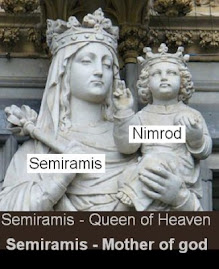


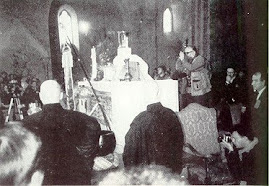
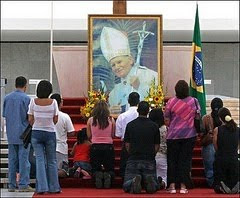
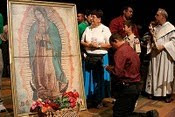


No comments:
Post a Comment